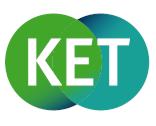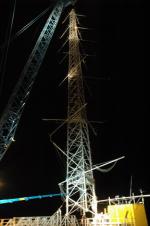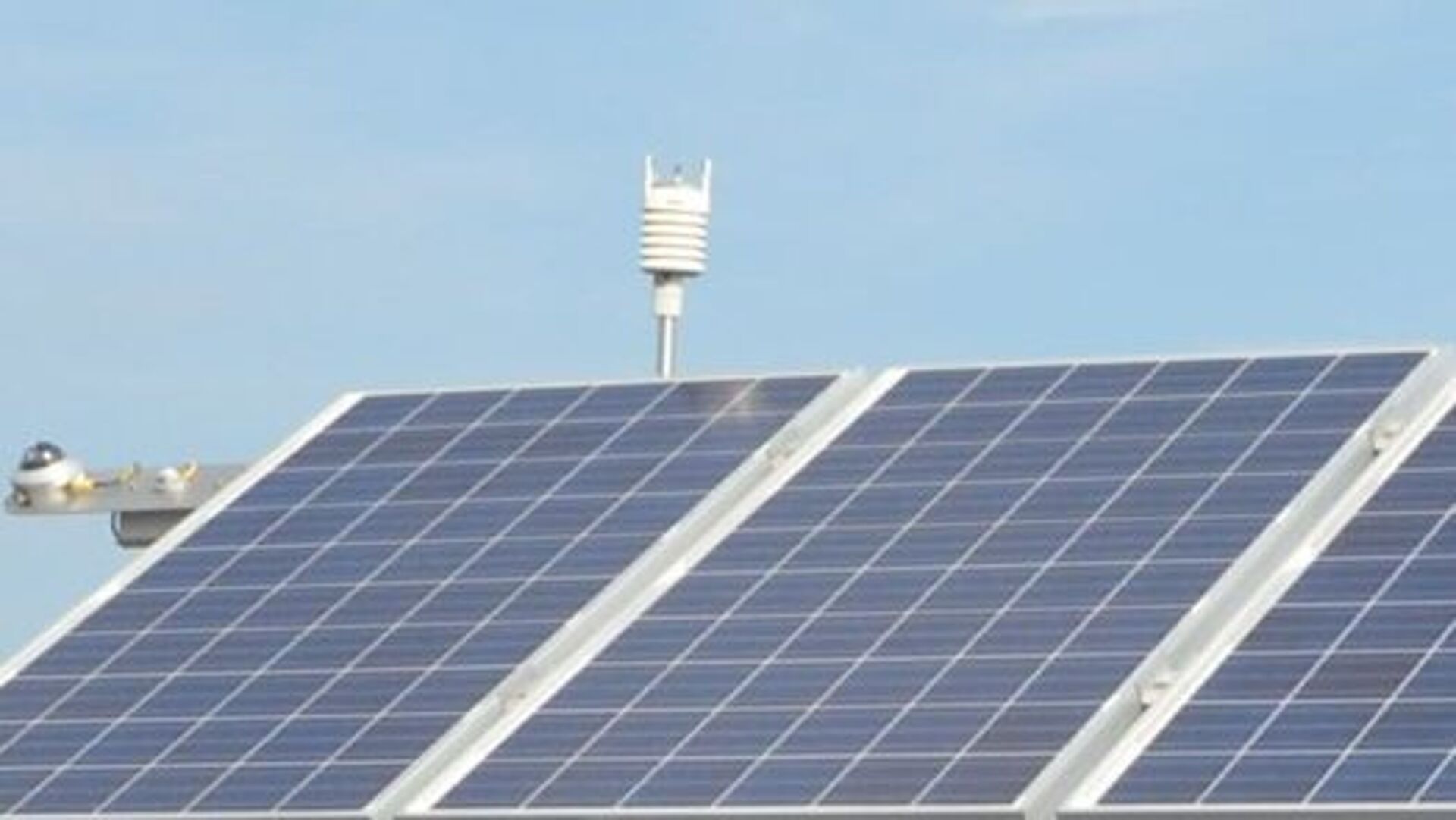
Solar charging station
A prototype of the solar charging station has been located in front of the O-building of Paderborn University at the junction of Pohlweg/Fanny-Nathan-Straße since 08.05.2019. The installed prototype is shown in Figure 3.1. The energy generated via the two solar modules is stored in two AGM batteries and used to charge electric bicycles or electric motor scooters as needed. The entire charging station weighs about 500kg. As it is a non-grid connected system, it can be placed at any position.
Flexi Energy
Successfully shaping the energy system of the future: Against the backdrop of increasing demand for energy and the finite nature of fossil fuels such as oil and gas, the German government has set the goal of increasing the share of electricity from wind and sun in gross final energy consumption from the current level of around 15 percent to 60 percent in 2050. The question arises as to how the future energy system should be designed under increasingly fluctuating energy production. The research and development project "FlexiEnergy" deals with these challenges. With a total volume of 2.4 million euros, the project is being funded by the state of NRW and the EU for three years with up to 1.6 million euros.
Funded by European Union (EFRE) and Ministry for Economic Affairs, Innovation, Digitalisation and Energy of the State of North Rhine-Westphalia


Start-Up Factory Kumasi
To kick off the DAAD-funded project "Start-Up Factory Kumasi - Paderborn" (2015-2018), Daniela Peters (TecUP / International Business) and Tobias Klaus (NEK) travelled to Kumasi and Accra for a fortnight in mid-June to discuss the schedule for the coming year with their colleagues and project partners. In addition to several meetings with colleagues from the Physics Department of the KwameNkrumah University of Science and Technology (KNUST), which is one of the best universities in sub-Saharan Africa, the two from Padreborn presented the project to the German Embassy in Accra, the capital of Ghana, the German Chamber of Commerce in Accra and several ministries.
Start-up Factory Ghana - Smart tropical house
rom 22 to 26 July, a mini-conference of the "Start-up Factory Ghana" took place. Students and teachers from the Paderborn University and the Kwame Nkrumah University of Science and Technology (KNUST) in Kumasi (Ghana) met to jointly promote innovation in Ghana.
The goal of the DAAD-funded cooperation project "Start-Up Factory Kumasi" of the universities in Paderborn University and Kumasi is the development of a tropical passive house - the "smart tropical house". One focus is also on cooperation between the university and companies. 14 students from KNUST are accompanying the project and working with the German students on tasks in the fields of architecture, air conditioning, business planning, photovoltaics and energy management. For example, Joshua Kweku Aidoo and Ruth Amoakohene are measuring the influence of different exterior façade coatings on the interior temperature of houses in Ghana.
The "smart tropical house" project focuses on reducing the currently very high energy demand in the domestic field. Due to the high outside temperatures in the African country, sufficient cooling of the interior fields is particularly important. Until now, this has been done through the use of air-conditioning systems. However, due to the insufficient insulation of the houses, a lot of energy is needed to keep warm air out. In addition, the idea focuses on improving groundwater purification to ensure a more hygienic and healthier water supply for households.
The project started in September 2015 and will enter into one-year collaborations with Ghanaian founders over a period of four years. In addition to realising the start-up idea, it is also important to anchor the basic idea of founding new business ideas and innovative technologies - what is founding, what does it mean and what steps are necessary for realisation? In this context, the Technology Transfer & Start-up Centre of Paderborn University (TecUp) offered a business workshop for the Ghanaian students and lecturers on 26 July. There, they were given an understanding of the development steps from the idea to the concrete business project and, in addition, the discourse on the needs and the realisation potentials of ideas in the Ghanaian context was promoted.
Even though the problems of insufficient groundwater purification and thermal insulation are prevalent in many African countries, Ghana's economic growth, scientific progress and economic and political stability make it a cooperation partner that offers very good basic conditions.
Solar Igel

Analyses of the large-scale integration of solar energy conversion systems (photovoltaics and solar thermal collectors) into municipal energy supply structures have shown that the most exact possible knowledge of the solar irradiation distribution is necessary for estimating and predicting fluctuations. Since no suitable measurement technology is available for this, a new type of radiation sensor was developed at the Chair of Electrical Power Supply.
With this new sensor, it is possible for the first time to record the solar irradiation with high resolution, both temporally and directionally, using a static measuring system. The aim of this research project is to set up a measuring network of seven sensors in the Paderborn area for a regionally defined area of about 150 km². An area-wide solar irradiation distribution is to be derived from the measurement data. This can serve as a basis for intelligent lighting and shading control in the course of advancing building automation as well as for regional support of weather forecasting.
This new measurement system opens up a wide range of new areas of application that are not possible in this form with conventional measurement technology, or only with considerable effort. One of these new areas of application is building automation.
The Solar Igel consists of an optical system for directionally resolved detection of solar irradiation and measuring electronics for processing the electrical signals of the individual measuring transducers. The measuring electronics consist of several amplifier stages, an analogue-digital converter (ADU), a multiplexer and a microcontroller. The microcontroller controls the measurement operation of the solar radiation sensor and makes the measurement data available to the control computer.

SoLife
In addition to increasing the efficiency, the aim of the project is to increase the service life of photovoltaic modules by integrating high-capacity, polymer-bound phase change materials with increased thermal conductivity.
The project is being worked on by KET and industrial partners.

Wind energy forecast
Wind farm operators are always striving to increase economic success, and remuneration by means of the Energy Feed-In Act (EEG) often loses importance. Although remuneration on the basis of the EEG is simple and convenient, the aim here is also to participate in the energy market. Especially under the aspect of the increasing provision of electrical energy from renewable sources, the integration of renewable energies into the energy market is becoming more and more important.
The short-term prediction of wind speeds (or energy yield) helps here and is an essential component in energy marketing. This makes it possible for energy providers to offer exactly (as far as possible) the capacity on the market that is generated by the portfolio of wind turbines and parks.
One of the prediction algorithms used is a Recurrent Neural Network (RNN) which is fed with pressure and wind speed data to create a prediction for a specific point. The RNN must be trained for the forecast, for which information on the pressure at 25 different locations in and near the North Sea and Baltic Sea is first used, which is provided by the marine weather service of the German Weather Service. A successful forecast provides pressure information at the 25 points which, in combination with the Kriging algorithm, is converted into an area so that wind speed forecasts can be made for desired points in the area. High and low pressure areas can be identified via this pressure distribution, and wind speed and direction can be inferred through calculations.
Offshore wind energy

The expansion of offshore wind energy has the potential to become an important pillar in climate protection. The advantages are a higher yield and greater capacity factors (more full load hours) compared to conventional wind energy use. The geographical framework conditions for offshore wind farms are often more difficult in Germany than in some neighbouring countries, which leads to higher costs. Nevertheless, the development of offshore wind energy secures production capacities and jobs in the wind energy sector and its suppliers in the long term. Research and development can compensate for some of the disadvantages of Germany's geographical situation and in the process achieve technological leadership in the field. The first step towards this is to establish accurate and reliable measurement platforms offshore. This is where EET-NEK has done pioneering work. Our measurement platforms are the basis for the following offshore wind farms: Amrumbank West and Nordsee Ost.
Press releases on this:
Status: 05.02.2016 06:30
"Amrumbank West" wind farm opened
Essen/Düsseldorf - E.ON has officially commissioned the Amrumbank West offshore wind farm. E.ON's CEO Johannes Teyssen, Hamburg's First Mayor Olaf Scholz (SPD) and the Parliamentary State Secretary in the Ministry of Economics Uwe Beckmeyer were present at the event in Hamburg's Hafenmuseum.
Symbolically, electricity generation was started in the North Sea. The Amrumbank West offshore wind farm is located 35 kilometres north of Helgoland and, with an installed capacity of 302 megawatts (MW), can supply about 300,000 households with wind power from the sea. The investment costs amount to one billion euros and have lifted E.ON's total investments in renewables above the ten billion euro mark.
Teyssen: Amrumbank West is "technology at its best"
Johannes Teyssen described Amrumbank West as "technology at its best" and promoted the further expansion of offshore technology. "Every energy has its time. And the time for a vigorous expansion of offshore wind energy has definitely come. Offshore is needed if we want to achieve the goals of the energy transition." Teyssen announced that E.ON will continue to engage in this business segment. The focus, he said, is on reducing the costs of renewable energies.
Beckmeyer: Continuous expansion as cornerstone for offshore success
State Secretary Uwe Beckmeyer referred to the economic advantages: "Reliability and continuous expansion are the cornerstones for a successful development of offshore wind energy. With the Amrumbank West wind farm, E.ON is making an important contribution here. The project builds on previous experience in the offshore field and proves that the northern German cluster offers many competitive advantages: the spatial proximity of the companies involved in the project, the work in a network and the cooperation over longer periods of time. This offers great learning potential and creates value and employment on the coast and far beyond."
Scholz: Exploiting the industrial policy potential of offshore wind energy
Hamburg's Mayor Olaf Scholz described the Amrumbank West offshore wind farm as another beacon of offshore wind energy development. Scholz continued: "It must be followed by others so that the potential of offshore wind energy in terms of energy economy and industrial policy does not remain untapped. Hamburg and the northern German states are committed to pushing ahead with the expansion of the grid infrastructure and the construction of wind farms. Clean electricity is needed throughout Germany and green electricity from the North Sea provides the necessary backing for the energy turnaround."
Source: IWR Online
© IWR, 2016
North Sea East
11.05.2015, 16:08
RWE officially inaugurates Nordsee Ost offshore wind farm
Hamburg - The Nordsee Ost offshore wind farm will be officially inaugurated as part of the G7 energy ministers' meeting. The wind farm with an installed capacity of 295 megawatts is expected to supply around 320,000 households with electricity. The EU has also invested several million euros in the project.
The inauguration was attended by Federal Minister of Economics Sigmar Gabriel and his ministerial colleagues from the G7 countries, as well as RWE CEO Peter Terium and Mel Kroon, CEO of Tennet, among others. The inauguration took place on the Helwin Alpha converter platform in the German North Sea.
Terium: RWE will be number three in the offshore wind market in 2015
The Nordsse Ost wind farm consists of a total of 48 Senvion turbines with an output of 6.15 MW each and is located about 35 kilometres north of Helgoland. RWE assumes just under 3,400 full-load hours per year, so that the offshore wind farm is expected to generate around one billion kilowatt hours per year. Federal Economics Minister Sigmar Gabriel (SPD) said: "Offshore wind energy is a strategically important building block in Germany's energy and climate policy for the success of the energy transition. With a continuous feed-in and high electricity yields, offshore wind energy makes a significant contribution to a diversified and thus secure energy supply." RWE CEO Peter Terium emphasised the important role that renewable energies play for the Group. RWE will be number three in the European offshore market this year, Terium said.
EU gives 50 million euros for Nordsee Ost
RWE has invested over one billion euros in the construction of this wind farm. The European Union has also supported the realisation of Nordsee Ost as one of the "lighthouse projects" in the field of renewable energies with a total of 50 million euros.
Construction was carried out from the base port in Bremerhaven. Like the foundations, the tower segments, nacelles and rotor blades were stored, pre-assembled and loaded onto the installation ships "Victoria Mathias" and "Friedrich Ernestine" at the Eurogate container terminal. According to RWE, during the installation of the foundations and turbines, the ships used covered a distance of 137,000 nautical miles (about 250,000 km), enough to sail around the world six times.
Further offshore parks planned and under construction at RWE
But RWE is doing even more in the field of offshore wind energy: in June, the Group will inaugurate the British wind farm Gwynt y Môr with an installed capacity of 576 MW off the Welsh coast. The project was realised together with Stadtwerke München and Siemens.
In the German North Sea, RWE Innogy (share of 15 percent) is also developing the Nordsee One, 2 and 3 wind farms together with its partner Northland Power (share of 85 percent). With a total installed capacity of around 1,000 MW, these wind farms are the largest planned offshore project off the German coast. 40 kilometres north of the North Sea island of Juist, construction of the offshore components for the first sub-project Nordsee One is scheduled to begin in 2016. Commercial operation is planned for the end of 2017.
Source: IWR Online
© IWR, 2015
Arkona Wind Farm
Arkona wind farm in the Baltic Sea
As the largest offshore wind farm in the German Baltic Sea to date, the Arkona wind farm was successfully commissioned in spring 2019. With 60 wind turbines of the 6 MW class, it supplies around 440,000 German households with renewable energy. The Arkona wind farm is located around 35 km northeast of Rügen.
It was developed as a 50/50 joint venture between the German utility RWE Renewables (after the takeover of E.ON Climate & Renewables) and the Norwegian energy company Equinor. A few months after the successful commissioning, Equinor announced that it would sell half of its shares, i.e. 25 per cent, via a public call for proposals.
The climatological and hydrometeorological measurements for this project were scientifically designed, monitored and accompanied by Paderborn University.
